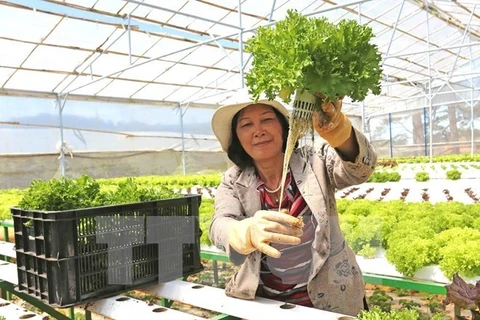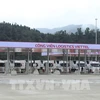HCM City (VNA) - Urbanisation brings rural consumers, accounting for 68 percent of the country’s 90 million people, closer to their counterparts living in towns and big cities and to a diversified media world, according to Nielsen’s recent Rural Mythbuster study.
When it came to identifying their digital consuming behaviours and key channels to reach them, television remained key while social media was evolving noticeably, it said.
Television reach in rural communities was at saturation point, with more than 90 percent owning a television at home and 57 percent having more than 10 television channels.
Ninety percent of rural consumers owned a mobile phone and 50 percent of them owned a smartphone.
While internet penetration remained relatively low, internet and digital platforms usage was on the rise among these consumers.
According to the report, nearly 24 million people in rural areas used the internet, which was on a par with their counterparts living in metropolitan places.
Social media emerged as one of the key platforms for obtaining information, entertaining and keeping in touch with relatives, friends and children, with 22.5 million Facebook users living in rural areas compared to 23.5 million in urban areas.
“As a result of being exposed more to media channels, there are a number of common themes emerging in relation to their attitudes and behaviours,” Nguyen Anh Dung, director of retail measurement services at Nielsen Vietnam, said.
Rural areas had been constantly growing as a new market for many manufacturers over the years.
In fact, in the first quarter of 2017 the rural market grew at 12.4 percent and accounted for 51 percent of total FMCG sales nation-wide, while urban only gained 6.5 percent.
When taking a deep dive into each price segment to see where the growth actually came from, mainstream and premium were the two key contributors to the growth of FMCG in rural areas, accounting for nearly 40 percent and 38.5 percent.
Seventy seven percent of rural consumers wanted to try new products and 95 percent appreciated having a wide range of products to choose from.
Subsequently, these insights led to a point whereby new launches in rural areas performed better than in key cities.
But with a highly diversified retail sector, ensuring products were reachable and available were instrumental and critical elements for success.
Traditional trade, a complex and highly competitive channel comprising more than 1.1 million individual outlets across 58 provinces (excluding Hanoi, Hai Phong, Da Nang, Can Tho and Ho Chi Minh City), was here to stay for the foreseeable future.
If businesses targeted 400,000 stores in top districts, those stores were highly likely to contribute up to 39 percent of retail sales.
Therefore, businesses were told to look at store segmentation or “where to focus” when thinking of expanding to this new potential market.
“As the rural Vietnamese community continues to evolve, transform and take centre stage as a key group for businesses, understanding who they really are, where, how and what they are buying and their most effective touch points will be prerequisites for future success,” Dung said.-VNA
When it came to identifying their digital consuming behaviours and key channels to reach them, television remained key while social media was evolving noticeably, it said.
Television reach in rural communities was at saturation point, with more than 90 percent owning a television at home and 57 percent having more than 10 television channels.
Ninety percent of rural consumers owned a mobile phone and 50 percent of them owned a smartphone.
While internet penetration remained relatively low, internet and digital platforms usage was on the rise among these consumers.
According to the report, nearly 24 million people in rural areas used the internet, which was on a par with their counterparts living in metropolitan places.
Social media emerged as one of the key platforms for obtaining information, entertaining and keeping in touch with relatives, friends and children, with 22.5 million Facebook users living in rural areas compared to 23.5 million in urban areas.
“As a result of being exposed more to media channels, there are a number of common themes emerging in relation to their attitudes and behaviours,” Nguyen Anh Dung, director of retail measurement services at Nielsen Vietnam, said.
Rural areas had been constantly growing as a new market for many manufacturers over the years.
In fact, in the first quarter of 2017 the rural market grew at 12.4 percent and accounted for 51 percent of total FMCG sales nation-wide, while urban only gained 6.5 percent.
When taking a deep dive into each price segment to see where the growth actually came from, mainstream and premium were the two key contributors to the growth of FMCG in rural areas, accounting for nearly 40 percent and 38.5 percent.
Seventy seven percent of rural consumers wanted to try new products and 95 percent appreciated having a wide range of products to choose from.
Subsequently, these insights led to a point whereby new launches in rural areas performed better than in key cities.
But with a highly diversified retail sector, ensuring products were reachable and available were instrumental and critical elements for success.
Traditional trade, a complex and highly competitive channel comprising more than 1.1 million individual outlets across 58 provinces (excluding Hanoi, Hai Phong, Da Nang, Can Tho and Ho Chi Minh City), was here to stay for the foreseeable future.
If businesses targeted 400,000 stores in top districts, those stores were highly likely to contribute up to 39 percent of retail sales.
Therefore, businesses were told to look at store segmentation or “where to focus” when thinking of expanding to this new potential market.
“As the rural Vietnamese community continues to evolve, transform and take centre stage as a key group for businesses, understanding who they really are, where, how and what they are buying and their most effective touch points will be prerequisites for future success,” Dung said.-VNA
VNA
























